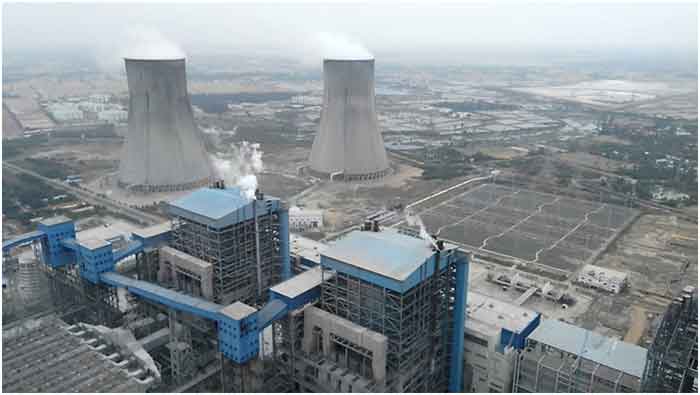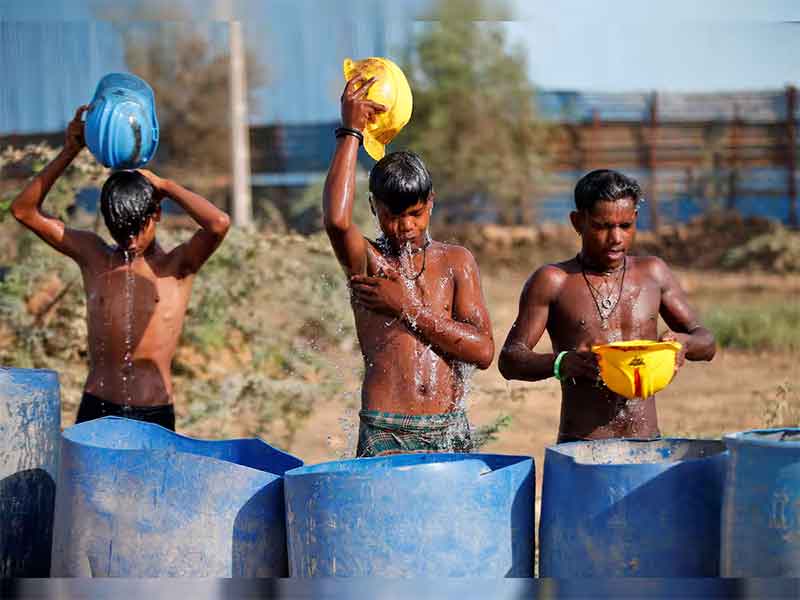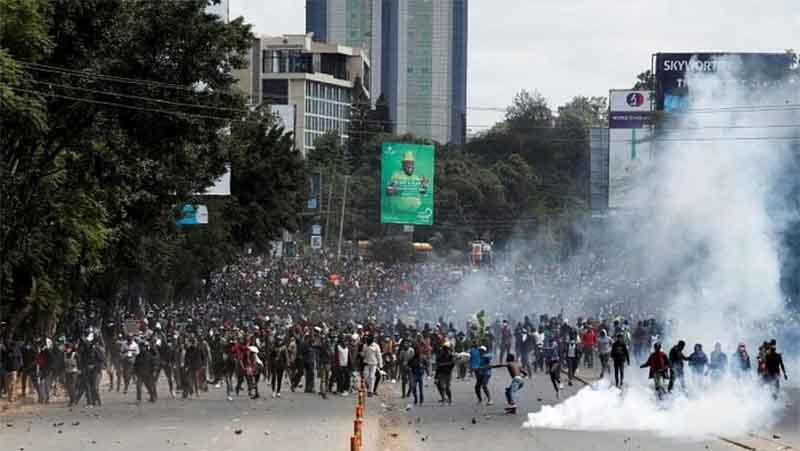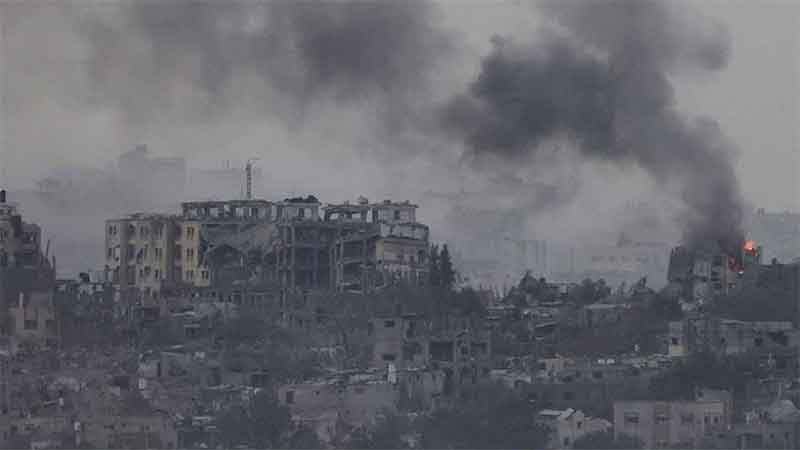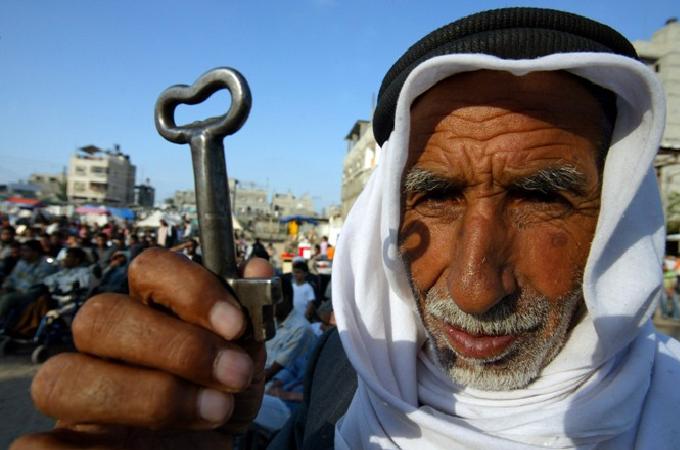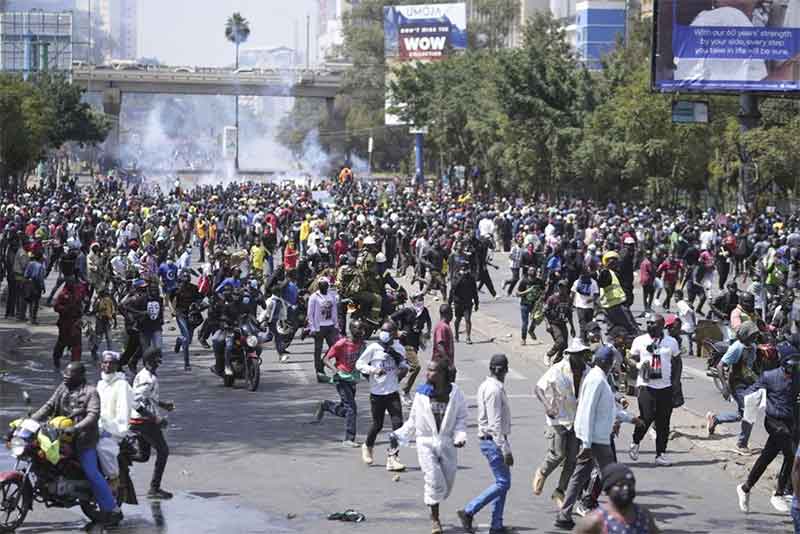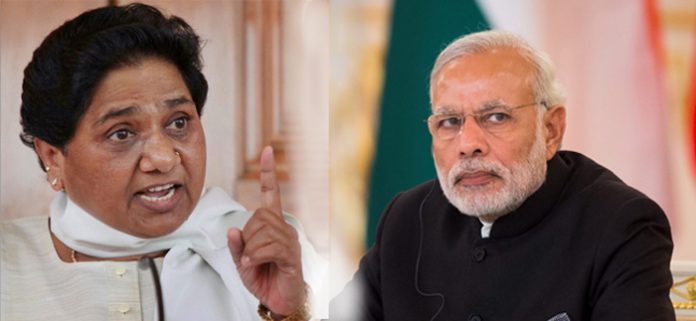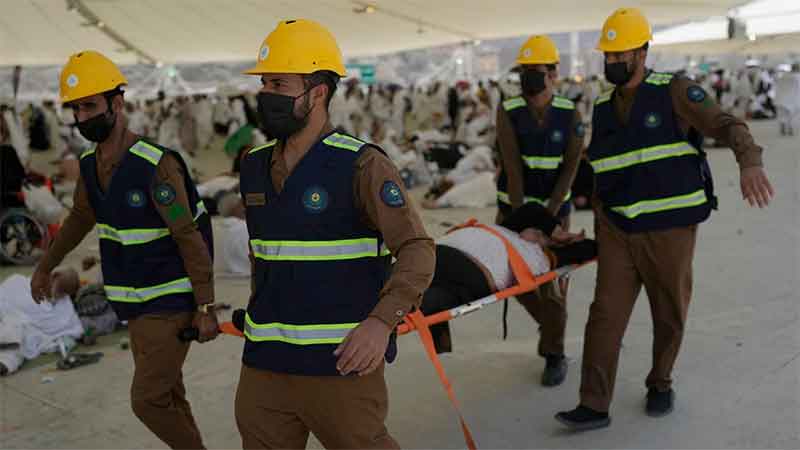
Deadly heat waves are affecting hundreds of millions of people around the world. For the past week, much of the Eastern United States has seen temperatures far higher than average for this time of year, with the heat index reaching over 100 degrees Fahrenheit (37.7 degrees Celsius) in some places and the National Weather Service predicting major and extreme heat risk for tens of millions of people over the next week.
The US heat wave, the result of a “heat dome,” is predicted to shift from the Midwest and Northeast to the Southern and Southwest US by the middle of next week after having originated in Mexico at the beginning of June.
Excessive heat in Mexico has claimed the lives of at least 125 people this year, as the country is being hit with the first named tropical storm of the year, predicted to be one of the most active hurricane seasons in recorded history. The heat has been so intense that howler monkeys were reported to be falling dead out of their trees.
This past week has also seen intense heat in the Mediterranean region that took several lives. Multiple tourists, including British journalist Michael Mosley, have died from the heat in recent weeks, and Greek authorities were forced to shut down the Acropolis to tourists, close schools and station medics across Athens as temperatures soared to up to 112 degrees Fahrenheit (44.5 Celsius).
According to meteorologist Panos Giannopoulos, heat waves are occurring earlier in the year. Speaking to Greek TV channel ERT, he said, “We never had a heatwave before June 19. We have had several in the 21st century, but none before June 15.
Similar temperatures stuck Italy and Turkey. Temperatures in Italy reached above 104 degrees Fahrenheit (40 Celsius), about 10 degrees Celsius above normal, according to Antonio Sanò, founder of the weather website ilmeteo.it.
Meanwhile, Turkey has seen temperatures 8-12 degrees Celsius above normal, with highs similar to Italy and Greece.
The research non-profit Climate Central estimates that the extreme heat has been made five times more likely to occur due to climate change, and the United Nations’ World Meteorological Organization published a report earlier this year that found heatwave-related deaths have increased in Europe by 30 percent over the past 20 years.
India and Pakistan, as well as broader parts of Southeast Asia, have also suffered through deadly heat. For more than a month, India has seen temperatures in excess of 100 degrees Fahrenheit and the capital New Delhi, home to nearly 34 million people, recorded its highest night temperature in 55 years at 95 degrees Fahrenheit (35.2 Celsius). Adjusted for the heat index, temperatures at night are estimated to feel well above 100 degrees.
The extreme heat has claimed the lives of at least 100 people and caused heat stroke in 40,000 over the past three and a half months. These numbers are likely an undercount as heat-related deaths with illnesses are not often recorded properly. Dileep Mavalankar, former head of the Indian Institute of Public Health in Gandhinagar, told the Associated Press that, “We don’t classify and measure deaths as much as we should and that is one reason why heat-related deaths are difficult to count.”
Research by World Weather Attribution estimates that the beginning of the heat wave in April was 45 times more likely due to climate change, and India’s weather agency believes the heat wave is among the longest in the country’s history.
The most severe impacts of the global heat wave have been in Saudi Arabia, where an estimated 1,000 people have died from the searing heat during the Islamic Hajj pilgrimage to Mecca. The Hajj is one of the most important religious events in Islam, drawing millions of people every year on a pilgrimage to the Kaaba, the “House of Allah.” Temperatures in Mecca reached 125 degrees Fahrenheit (51.8 Celsius) this week.
This year the Saudi government issued 1.8 million permits for the Hajj, a procedure designed to control the number of pilgrims. However, many people who are unable to afford a permit go anyway. Saudi officials reported removing hundreds of thousands of unregistered pilgrims from Mecca earlier this month.
Without a permit, unregistered pilgrims are unable to access air-conditioned areas and other safety systems established for the high heat. On Thursday morning, CBS News reported that an Arab diplomat said 630 of 658 people who died were unregistered. As of this writing, 10 countries have confirmed a total of 1,081 deaths.
This year’s extreme heat can be partially ascribed to El Niño, the warm period of the El Niño Southern Oscillation, or ENSO, that occurs in the Pacific ocean.
ENSO fluctuates between the warm El Niño and the cool La Niña, as ocean convection currents bring warmer or cooler water to the surface. This fluctuation, between about half a degree Celsius either side of average, fuels global conditions for wetter, drier, cooler, or warmer climates around the world.
The current El Niño, which began last spring/summer, is one of the strongest on record and has been associated with severe droughts in Mexico, Colombia, South Africa and India.
But the El Niño event cannot be solely blamed for the current global heat waves. The underlying cause is climate change.
Data from the National Oceanic and Atmospheric Administration (NOAA) shows that average global temperatures have risen steadily since the 1950s, and that the extremes associated with ENSO have risen with them.
The climatic changes from ENSO are gaining more energy and impact from a warming climate that is altering its behavior. As the world warms, the impacts of ENSO will strengthen as well.
If the ENSO cycle is like a swing, climate change is like a person behind the swing pushing it towards more extreme events. La Niña is associated with stronger hurricane seasons and this year is predicted to be one of the most prolific in history. And while La Niña is a relative cooling event in the tropics, it can cause warmer temperatures in parts of North America and Asia.
The current heat wave comes as El Niño weakens and shifts into a La Niña cycle, bringing with it a relative cooling to the planet. But this will not offset the impacts of climate change.
The 2021 heat dome, which killed upwards of 1,600 people in Canada and the US, occurred in the middle of a three-year-long La Niña. That period saw some the worst natural disasters in recent years, with two of the most active hurricane seasons in US history, historic flooding in Australia, and severe heat waves and forest fires in Chile and Argentina.
As the earth continues to warm, such natural disasters will only increase in frequency and severity. The rising death toll from the current heat wave is a product of the warming climate and the failure of world governments to effectively combat climate change and provide adequate social services to those most at risk from extreme heat events.
Originally published in WSWS.ORG

